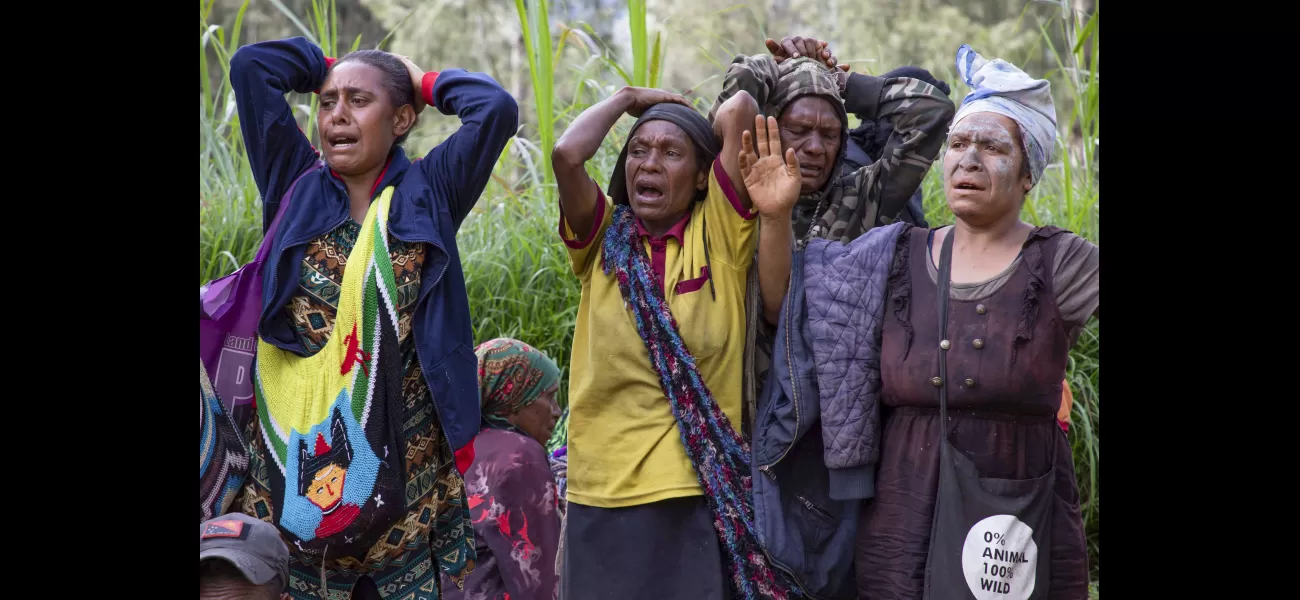Recent photos show terrible aftermath of landslides
Officials concerned about potential for another landslide and disease outbreak at Papua New Guinea disaster site due to water and bodies still buried.
May 28th 2024.

There is a looming sense of fear among authorities in Papua New Guinea as they worry about a potential second landslide and disease outbreak at the site of a recent disaster. The United Nations has reported that the tons of debris that swept over a village has trapped water streams and bodies, making the situation even more hazardous.
Officials are urging thousands of people to prepare for possible evacuation, as the situation continues to be unstable. Last Friday, Yambali village in the remote highlands was devastated by a landslide caused by a limestone mountainside collapsing. The debris, which consists of boulders, earth, and splintered trees, has become even more dangerous due to recent rain and trapped streams.
Serhan Aktoprak, chief of the International Organisation for Migration's mission in Papua New Guinea, has expressed concern over the safety of the villagers. The agency estimates that 670 people have died, while the government believes that over 2000 people may have been buried. So far, only six bodies have been retrieved from the rubble.
Aktoprak has also shared that there are talks of another potential landslide, which could affect up to 8,000 people. He emphasized the need for urgent evacuation and relocation of the affected population, which includes those who have lost their source of clean drinking water and subsistence farmers who rely on their vegetable gardens.
The United Nations has reported that a total of 7,849 people have been affected by the disaster, including those who may need to be evacuated or relocated. The agency has raised concerns about the health risks posed by decaying corpses and contaminated water, and has discussed these issues with national and international responders.
Geotechnical experts and heavy earth-moving equipment are expected to arrive at the site soon. In addition, the Papua New Guinea government has officially asked for assistance from the United Nations and other countries. An Australian disaster response team has already arrived, and they will be conducting geohazard assessments and using drones to map the area.
Meanwhile, villagers are being evacuated to safer grounds, and evacuation centers have been set up on either side of the debris heap. However, the process has been slow and challenging, with some villagers resorting to digging with their bare hands to find their loved ones.
One heartbroken villager, Evit Kambu, expressed her frustration as she shared that 18 of her family members are buried beneath the debris. She thanked those who were helping with the search and rescue efforts, but also expressed her helplessness in not being able to retrieve the bodies.
The Australian government has offered logistical support for clearing debris, recovering bodies, and providing aid to displaced people. They have also sent in supplies and heavy earth-moving equipment to assist with the rescue efforts. However, there have been some challenges, such as a collapsed bridge that has delayed the transport of supplies to the affected area.
Despite the challenges, the government is determined to help in any way possible. As Deputy Prime Minister Richard Marles stated, "There is more that we are seeking to do, but to be frank, part of the issue here is about not overwhelming a system which is currently under a lot of stress." The ultimate goal is to provide assistance to the people of Papua New Guinea, who are facing this devastating disaster in their already challenging lives.
Officials are urging thousands of people to prepare for possible evacuation, as the situation continues to be unstable. Last Friday, Yambali village in the remote highlands was devastated by a landslide caused by a limestone mountainside collapsing. The debris, which consists of boulders, earth, and splintered trees, has become even more dangerous due to recent rain and trapped streams.
Serhan Aktoprak, chief of the International Organisation for Migration's mission in Papua New Guinea, has expressed concern over the safety of the villagers. The agency estimates that 670 people have died, while the government believes that over 2000 people may have been buried. So far, only six bodies have been retrieved from the rubble.
Aktoprak has also shared that there are talks of another potential landslide, which could affect up to 8,000 people. He emphasized the need for urgent evacuation and relocation of the affected population, which includes those who have lost their source of clean drinking water and subsistence farmers who rely on their vegetable gardens.
The United Nations has reported that a total of 7,849 people have been affected by the disaster, including those who may need to be evacuated or relocated. The agency has raised concerns about the health risks posed by decaying corpses and contaminated water, and has discussed these issues with national and international responders.
Geotechnical experts and heavy earth-moving equipment are expected to arrive at the site soon. In addition, the Papua New Guinea government has officially asked for assistance from the United Nations and other countries. An Australian disaster response team has already arrived, and they will be conducting geohazard assessments and using drones to map the area.
Meanwhile, villagers are being evacuated to safer grounds, and evacuation centers have been set up on either side of the debris heap. However, the process has been slow and challenging, with some villagers resorting to digging with their bare hands to find their loved ones.
One heartbroken villager, Evit Kambu, expressed her frustration as she shared that 18 of her family members are buried beneath the debris. She thanked those who were helping with the search and rescue efforts, but also expressed her helplessness in not being able to retrieve the bodies.
The Australian government has offered logistical support for clearing debris, recovering bodies, and providing aid to displaced people. They have also sent in supplies and heavy earth-moving equipment to assist with the rescue efforts. However, there have been some challenges, such as a collapsed bridge that has delayed the transport of supplies to the affected area.
Despite the challenges, the government is determined to help in any way possible. As Deputy Prime Minister Richard Marles stated, "There is more that we are seeking to do, but to be frank, part of the issue here is about not overwhelming a system which is currently under a lot of stress." The ultimate goal is to provide assistance to the people of Papua New Guinea, who are facing this devastating disaster in their already challenging lives.
[This article has been trending online recently and has been generated with AI. Your feed is customized.]
[Generative AI is experimental.]
0
0
Submit Comment





